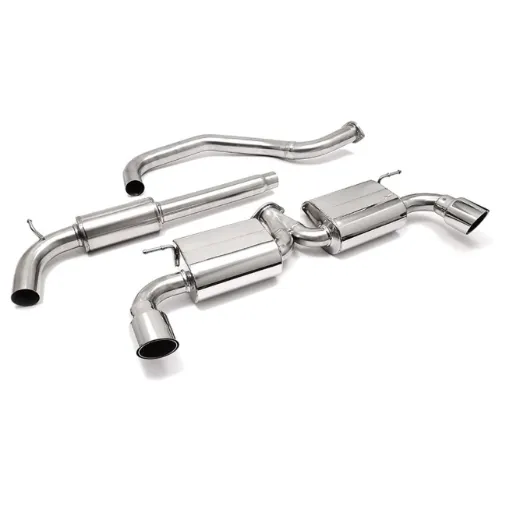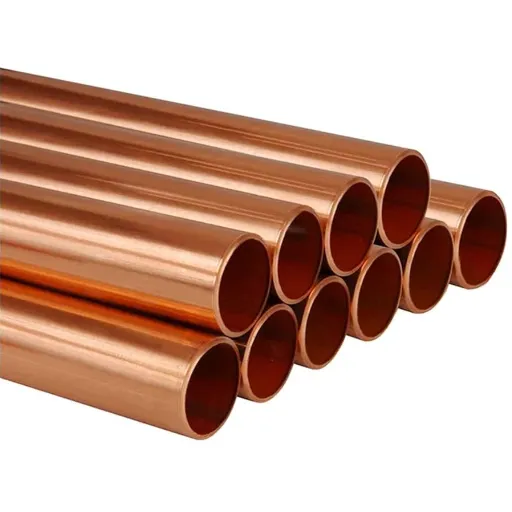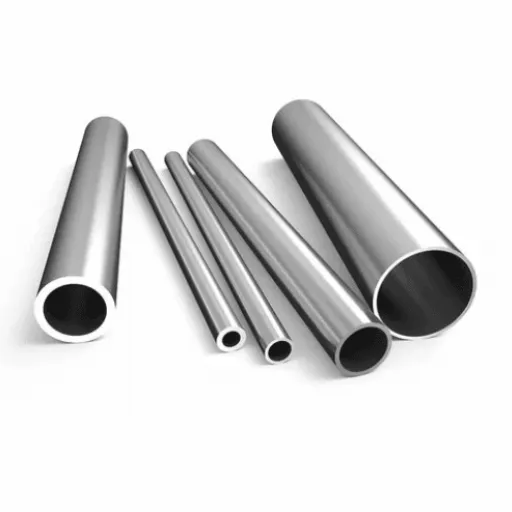Stainless steel is an essential material in countless industries, from construction and automotive to medical equipment and cookware. Its durability, corrosion resistance, and aesthetic appeal make it a top choice for a wide variety of applications. However, not all stainless steel is created equal. Among the many grades available, 204 and 304 stainless steel are two widely used options that often spark confusion due to their similarities. This article will break down the differences between these two grades, helping you understand their distinct properties, advantages, and ideal applications. Whether you’re selecting materials for a project or simply looking to expand your knowledge, this guide will provide the clarity you need to make informed decisions.
What is 304 Stainless Steel?
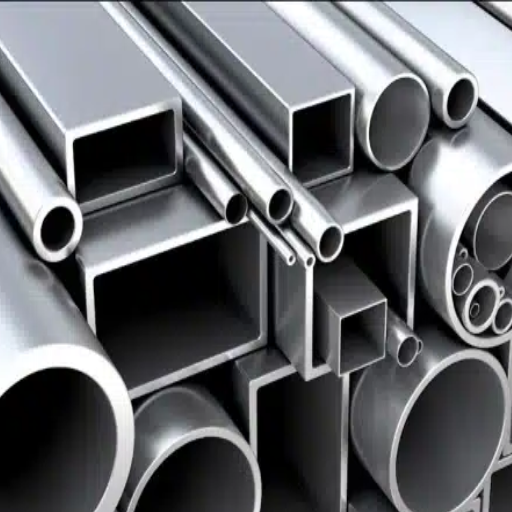
Features of Grade 304 Stainless Steel
Grade 304 stainless steel is famous for corrosion resistance, wide applicability, and mechanical strength. It belongs to the group of austenitic stainless steels, which are commonly used because of their non-magnetic characteristics and corrosion resistance to different environmental conditions. The alloy possesses around 18% chromium and 8% nickel, both important elements necessary for corrosion-resistant properties. Not only that, it is also very durable and resistant to oxidizing agents, and, thereby, offers great opportunities for application both indoors and outdoors.
Being 304 stainless steel, the key property is resistance to rust and other environmental degradation. For these reasons, it finds applications in the food preparation, pharmaceutical, and chemical processing industries where hygiene and material integrity are paramount. Its excellent workability also means that it is easily made into all sorts of products, ranging from kitchen equipment to transportation equipment to structural elements.
Another advantage of 304 stainless steel is that it can be used at higher temperatures with no problems. It retains strength and stability at temperatures approaching 870°C (1600°F). The ease of cleaning and maintenance further enhances its attractiveness. Yet, it must be considered that, although offering high-level resistance to most corrosive environments, 304 stainless steel may be inferior when exposed to chlorides, where pitting corrosion could occur. Hence, the choice of materials must be closely tied to their performance requirements.
Where is 304 Stainless Steel Used?
Its topology, structure, and surface restrain the entities that contact it. Hence, predominant uses of 304-grade stainless steel have always remained in several branches of the food and drink industry equipment, such as storage tanks and piping systems. In addition, since the surface is non-reactive to consumable liquids and capable of being subjected to aggressive cleaning measures, hygienic conditions can be warranted.
304 stainless steel is mainly applied in construction and architectural works. Sometimes it was used as an exterior cladding for buildings, when cast in handrails or other architectural features, because of its appeal and its ability to withstand the weather, interfering only slightly with degradation. Rust-resistant features make it an appropriate construction material for interior and exterior environments, notwithstanding high-traffic public locations.
For the automotive and transport sector, 304 stainless steel is also a crucial product, involving its exploitation in exhaust systems, trim parts, and occasionally structural components. Furthermore, it is also used in the manufacture of surgical instruments, household appliances, and equipment for chemical storage. Its utility and cost efficiency make it among the most employed materials in contemporary engineering and production.
Comparing 204 and 304 Stainless Steel
The main difference has to do with differing chemical Composition, resistance to corrosion, price, and usage, with 204 being cheaper but less corrosion resistant than 304. Here is a brief:
|
Aspect |
204 Steel |
304 Steel |
|---|---|---|
|
Nickel Content |
0.5-2 |
8-10 |
|
Chromium Level |
16-18 |
18-20 |
|
Manganese Amount |
5-8 |
≤2 |
|
Rust Resistance |
Moderate |
High |
|
Price |
Lower |
Higher |
|
Usage |
Indoor, Basic |
Industrial, Food |
|
Joining Ease |
Moderate |
Excellent |
|
Magnetic Nature |
Non-magnetic |
Non-magnetic |
|
Tensile Strength |
655 MPa |
515 MPa |
|
Longevity |
Less Durable |
Highly Durable |
What are the Main Differences Between 204 and 304 Stainless Steel?
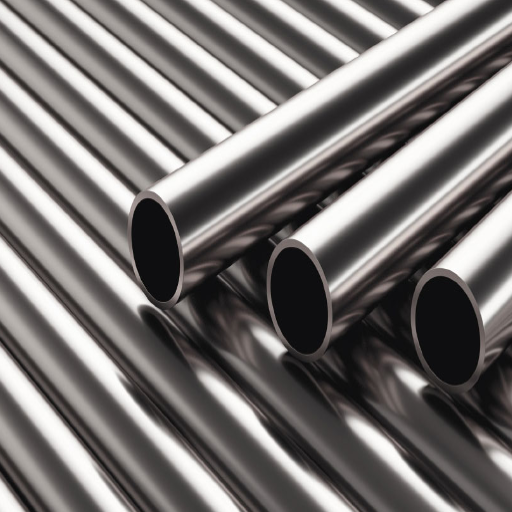
Chemical Composition: 204 vs. 304
The chemical composition of 204 and 304 stainless steel differs primarily in nickel, manganese, and chromium, with the 204 containing less nickel and more manganese than the 304.
|
Element |
204 Steel |
304 Steel |
|---|---|---|
|
Nickel |
0.5-2 |
8-10 |
|
Chromium |
16-18 |
18-20 |
|
Manganese |
5-8 |
≤2 |
|
Carbon |
≤0.10 |
≤0.08 |
|
Silicon |
≤2.0 |
≤0.75 |
|
Phosphorus |
≤0.040 |
≤0.045 |
|
Sulfur |
≤0.015 |
≤0.030 |
|
Nitrogen |
1500-3000 ppm |
≤0.10 |
|
Copper |
2-3.5 |
None |
|
Molybdenum |
≤1.0 |
None |
Corrosion Resistance and Toughness
When comparing these grades of stainless steels, consider corrosion resistance and toughness as two factors of crucial importance. Grade 304 stainless steel has better corrosion resistance due to its high chromium content (18-20%) and nickel (8-10.5%), so it is often used in moist, acidic, or saline environments like marine applications and chemical processing. Being molybdenum-free, 204 stainless steel offers less resistance to local corrosion types, such as pitting or crevice corrosion, which limits its use in harsh environments.
In terms of toughness, 204 stainless steel has moderate toughness with tensile strength around 655 MPa and is considered to possess good resistance to mechanical stress. On the other hand, 304 stainless steel allows for more ductility and toughness, with a tensile strength of roughly 515 MPa, and excels in both cold and high-temperature applications. Moreover, 304 stainless steel is heavily resistant to stress corrosion cracking and fares well under long-term load-bearing and corrosive environments.
Therefore, these attributes make 304 suitable for use in industrial, food processing, and medical equipment, wherein long-term performance is a prime factor, and susceptibility to degradation factors comes from the second. Conversely, 204 stainless steel is a cheaper option for applications demanding only medium-level corrosion resistance and strength, such as indoor environments or atmospheres where corrosive factors are rarely encountered.
The Role of Nickel and Manganese
Nickel and manganese are critical alloying elements in stainless steel, each imparting specific characteristics to individual stainless steel grades, such as corrosion-resistant, hardenable, or work-hardenable steels. Their roles are primarily defined by their influence on corrosion resistance and strength, and secondarily on the microstructure of the stainless steel.
- Corrosion Resistance: Nickel is considered the prime alloying element against oxidation and corrosion in acid or moisture environments, for it stabilizes the stainless steel in the austenitic form, thus allowing more chromium in the alloy to passivate the steel. Manganese, on the other hand, enhances the resistance against mild oxidizing agents and deoxidizes the metal during melting.
- Austenitic Phase Stabilization: As a strong austenite stabilizer, nickel maintains the face-centered cubic (FCC) structure of the steel even at low temperatures. This is important for grade 304 or 316 stainless steels that require such ductility and toughness. Manganese also partly plays a role in stabilization, but more so in a cost-saving way, thus often substituting somewhat for nickel.
- Work Hardening and Strength: Manganese also increases strength during the working of stainless steel by ensuring its work-hardening capacity. Nickel contributes less to work hardening but works more on increasing the toughness and tensile strength of the alloy to ensure durability under a vast range of loading conditions.
- Cost Efficiency: Manganese is relatively less costly than nickel, which makes it more economical to replace part of the nickel content with manganese in alloys such as 204 stainless steel. Such substitution helps manufacturers to obtain lower-priced stainless-steel grades without really compromising corrosion resistance or mechanical properties.
- Weldability and Fabrication: Both elements are important in giving enhanced weldability and fabrication to stainless steels. Nickel reduces weld cracking, particularly, for example, in high-chromium alloys, while manganese facilitates welding by reducing sulphur impurity and increasing overall material purity.
These attributes relate to the importance of nickel and manganese in stainless steel design and performance, with finer selections dependent on specific environments and functional requirements.
How Does the Corrosion Resistance of 204 and 304 Compare?
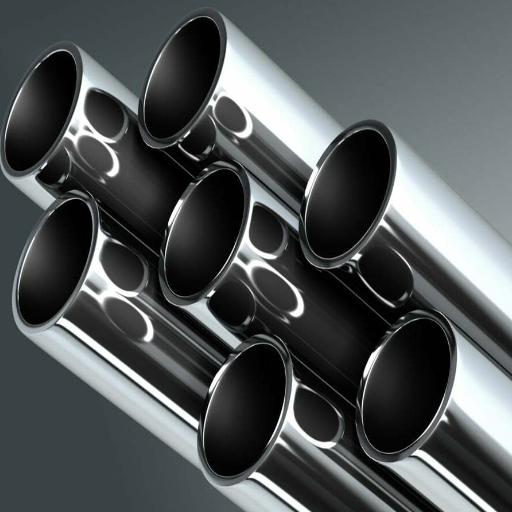
Factors Affecting Corrosion Resistance
Corrosion resistance of stainless steels such as grades 204 and 304 can be thought to have a correlated featural influence through chemical composition, environmental exposure, and operational conditions. Chromium content is of primary importance as corrosion resistance forms a washcoat of oxides that neither damages nor degrades the metal oxides can restore themselves whenever damaged. Both grades contain chromium, though with just a little less in 204, granting it lesser resistance against corrosive media than the 304.
Environmental factors like the presence of chloride ions increase the formation of pits and crevices in marine or industrial settings. Nickel in grade 304 enhances resistance to local corrosion phenomena, whereas the lower nickel content and higher manganese content in 204 would contribute to its unreliability in a chloride-rich environment. Further, the presence of molybdenum in certain forms of 304 improves chloride corrosion resistance; this characteristic doesn’t exist in 204.
Operational conditions consisting of temperature, pressure, and mechanical stresses also govern the performance. Higher temperatures promote oxidation, while stress corrosion cracking becomes an issue when tensile stresses exist concurrently with some chemical surroundings. Grade 304 usually maintains the best performance at these stresses and temperatures because of its best structural integrity and chemical stability.
Last but not least, surface finish and maintenance regimes affect the passive layer longevity and resistance. A smooth and well-polished finish resists contamination and corrosion initiation better than a rough or poorly treated one. Regular cleaning, together with the avoidance of long chemical exposures, would maintain both grades at their best corrosion resistance.
Thus, being aware of these factors will lead to the right choice of stainless steel grade according to the intended application, for material longevity, and structural reliability.
Testing for Corrosion in Stainless Steel
Stainless steel corrosion testing covers several methods to test the material’s vulnerability to corrosion, like pitting, crevice corrosion, or stress corrosion cracking. Various procedures, including the ASTM G48 test and electrochemical test methods, are considered well-established methods to test for pitting resistance. For instance, the ASTM G48 test uses a ferric chloride solution to determine the critical pitting and crevice corrosion temperatures, thereby providing a relative way of quantifying the corrosion resistance of alloys.
For intergranular corrosion, the ASTM A262 practice is used to test steel by exposing it to certain acidic solutions or corrosive environments and identifying the susceptibility to corrosion at grain boundaries. This test becomes useful for situations in which welding or exposure to high temperatures may have resulted in chromium carbide precipitation, thus provoking localized corrosion.
More advanced electrochemical experiments, such as cyclic potentiodynamic polarization (CPP), are used to generate quantitative measurements of passive film breakdown in stainless steels. CPP curves provide information on passivity, repassivation behavior, and critical pitting potential of the material under investigation. These parameters could be of great importance in determining the performance of stainless steel in aggressive environments, such as marine, chemical processing, or medical environments.
Combining these standard tests with simulations of realistic environmental conditions enables engineers to achieve a detailed understanding of the corrosion mechanisms involved, paving the way for informed decisions when it comes to the design of components with utmost durability and integrity within specific functional settings.
Tips for Choosing Corrosion-Resistant Steel
- Assess Environmental Conditions
The preliminary stage of selecting corrosion-resistant steel must begin with a full-fledged analysis of the working environment. For marine environments, grades like 316 stainless steel should be selected, which has molybdenum for increased resistance against pitting and crevice corrosion due to chloride exposure. For strong acids, duplex stainless steels or better-quality alloys like Hastelloy or Monel should be used for resistance.
- Corrosion Mechanisms
In varying environments, various types of corrosion occur, such as pitting corrosion, intergranular corrosion, or galvanic corrosion. You should ensure that the steel you select will either be alloyed to mitigate these mechanisms or at least be resistant to them. Adding chromium will provide resistance against oxidation; adding nickel will generally make the steel more durable under hostile conditions.
- Check the Standards
Select materials that have been tested and certified to international standards relevant to their use, such as those by ASTM, DIN, or ISO. For example, ASTM A240-certified materials would fulfill the more stringent requirements against corrosion and mechanical properties necessary for certain applications, such as in chemical processing or for medical applications.
- Consider Cost Versus Performance
Since high-alloy steels, such as super duplex or titanium grades, will afford better resistance, they could well be beyond the project’s requirement from a cost standpoint. Go through a cost-benefit analysis that will weigh the initial investment versus maintenance and upkeep costs while ensuring appropriate corrosion resistance.
By applying these rational points systematically, material selection can be optimized, and, therefore, structures will have reliability, reduced maintenance, and extended service life in spite of adverse environmental factors.
What Are the Weldability Differences in 204 and 304 Stainless Steel?
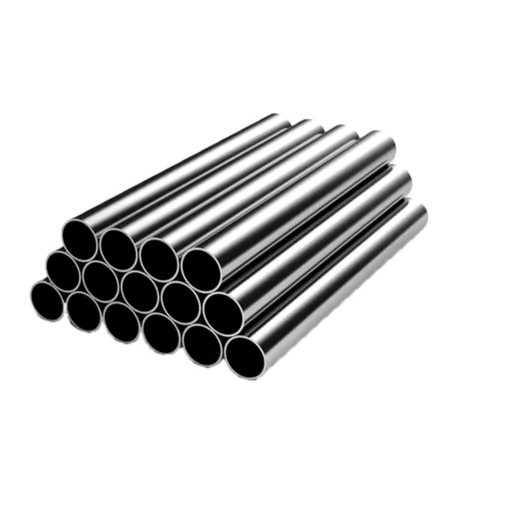
Weldability of 204 Stainless Steel
204 stainless steel is an austenitic grade largely used for structural and general fabrication works. It can therefore be considered to have moderate weldability compared with other austenitic grades, such as the 304 stainless steel. The weldability of 204 stainless steel is discouraged because of the higher manganese and lower nickel content, as manganese above specified limits during welding can create problems in the form of hot cracking of weld metal, which occurs if managed improperly. This alloy is weldable with all conventional processes, for instance, gas tungsten arc welding (GTAW) and gas metal arc welding (GMAW), shielded metal arc welding (SMAW), and resistance welding.
One of the critical factors is the choice of filler materials when welding 204 stainless steel; to preserve corrosion resistance and mechanical properties of the weld joint, the use of austenitic fillers of 308 or equivalent grades is generally recommended. Preheating is mostly not required for 204 stainless steel, while interpass temperatures should be controlled to avoid sensitization.
Post-weld conditions could change and affect the performance of the material. Removal of heat tint, followed by restoration of the protective chromium-rich oxide layer through pickling and/or passivation, is usually applied for corrosion resistance. Post-weld heat treatment may also enhance performance for applications requiring high strength and long exposure in corrosive environments, but that depends on the application itself.
Conversely, though 204 is a less-expensive alternative to grade 304, ensuring structural integrity and preventing weld defects during the welding of 204 stainless steel is a matter of care. Proper joint design, surface preparation done cleanly, and welding parameters considered all the way to achieving quality welds are the key factors.
Welding Techniques for 304 Stainless Steel
304 Stainless steel is an austenitic alloy widely applied for its corrosion resistance, strength, and weldability. It is crucial to apply proper welding techniques to retain the mechanical properties and corrosion resistance of the welded joints.
TIG welds are the most commonly used welding for 304 stainless steel, given their accuracy and precision to produce welding of the finest quality. The use of a DCEN mode is recommended to apply minimum heat and minimize the distortion or warping of joints. Such inert gases like argon or argon-helium mixtures must shield the weld pool adequately with minimal contamination and oxidation.
If, for some reason, higher productivity is desired, welding by GMAW can be supported. When GMAW is used in the thinner sections, pulse spray transfer or short circuiting should be used to minimize heat input. A filler metal that matches the base material, such as ER308L, should be used to prevent sensitization of the weld metal and to maintain its corrosion resistance.
Surface preparation before welding is of utmost importance. Contaminants such as oil, grease, or oxide scales must be removed from the surface to prevent weld defects such as porosity or inclusions. Any cleaning required after weld completion should include pickling or passivation to restore the chromium oxide layer on the stainless steel surface, which gives it its corrosion resistance.
Heat consideration is a very important factor as well. Excess heat input causes the precipitation of carbides at grain boundaries, resulting in intergranular corrosion in chloride environments. Maintaining an interpass temperature of less than 350°F (177°C) combined with cooling rates will prevent these untoward effects from occurring.
For thicker sections, pre-weld processing such as joint design and edge preparation is arranged to assure optimum penetration and mechanical integrity. As for joints for 304 stainless steel, single-V or double-V grooves are common types, depending on the thickness of the material.
Highly manufactured welds of stainless steel are thereby created through adherence to all these best conditions and proper welding techniques. This guarantees stainless steel welds to perform with durability, corrosion resistance, and structural reliability in multiple applications.
Challenges in Welding Different Stainless Steel Grades
Dealing with the different grades of stainless steel presents me with primary challenges relating to heat properties. Most stainless steels have relatively low thermal conductivity combined with a high coefficient of thermal expansion, which brings about distortion or warping when it is welded. This is particularly true with grades of austenitic stainless steels, as they are more prone to deformation induced by heat. Controlling heat input and using proper clamping and fixturing techniques are necessary to minimize these effects.
The other major issue I face is sensitization and carbide precipitation, especially in stainless steels such as types 304 or 316. Chromium carbide may precipitate at the grain boundaries when these materials are held at elevated temperatures. Corrosion resistance is adversely affected by this, particularly in intergranular corrosive environments. My approach to these problems usually involves using low-carbon grades like 304L or 316L or stabilizing the material with titanium or niobium to prevent carbide precipitation.
Last but not least, I find the ability to weld varies quite significantly between stainless steel families, that is, ferritic, martensitic, and duplex grades. Each grade has cemented the need for special welding methods in order not to form defects such as microcracking or porosity. For example, duplex stainless steels require very careful control of heat input and a precise balance between austenite and ferrite to achieve optimal mechanical properties. By knowing the unusual metallurgical characteristics of the grades and tailoring the approach, I can work around these inherent problems to weld successfully.
How Do the Mechanical Properties of 204 and 304 Stainless Steel Differ?
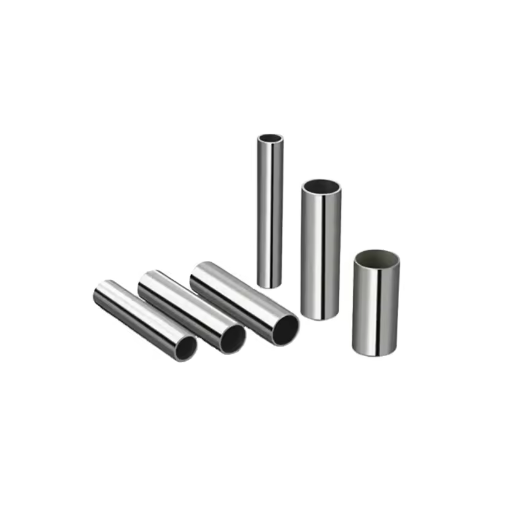
Comparing Ductility and Strength
204 stainless steel has high tensile strength but low ductility, whereas 304 stainless steel has better elongation and overall toughness.
A small table follows to summarize ductility and strength measures:
|
Aspect |
204 Steel |
304 Steel |
|---|---|---|
|
Tensile (MPa) |
655 |
515 |
|
Yield (MPa) |
310 |
205 |
|
Elongation (%) |
40 |
40 |
|
Toughness |
Lower |
Higher |
|
Hardness |
Higher |
Moderate |
Impact of Material Grade on Mechanical Performance
The stainless steel material grade has a guiding effect on the mechanical performance of stainless steels. Different composition, heat treatment, and processing impart varying degrees of tensile strength, yield strength, hardness, and corrosion resistance to each grade. Below is a detailed listing of the role of each performance criterion in defining the material’s grade and some metrics for its characterization:
- Tensile Strength: A higher grade of stainless steel, such as 304, features lower tensile strength compared to grade 204. For example, 204 exhibits a tensile strength of 655 MPa, whereas 304 stands at 515 MPa. This makes 204 suitable for applications in which higher mechanical stresses are possible, though with less ductility.
- Yield Strength: Stainless steel 204 has a higher yield strength value of 310 MPa when compared with 304, having a value of 205 MPa. Yield strength is the ability of steel to maintain its shape under stress, so grade 204 is more resistant to deformation under loading.
- Elongation at break: Both grades 204 and 304 give the same percentage elongation of 40%. This is important in processes that require large deformation, like rolling or stamping, as elongation will help prevent fissuring.
- Toughness: Grade 304 is generally considered to have superior toughness as compared to grade 204, especially at lower operating temperatures. This ability is important for cryogenic applications or applications subject to impact, where resistance to fracture is paramount.
- Hardness: Grade 204 has a relatively higher hardness stated as a property than 304; this, in return, provides for wear resistance to 204 but at the cost of machinability, and hence, this trade-off with ductility must be weighed carefully during the design stage whenever complex geometry is intended.
The above properties demonstrate how the stainless steel material grade will affect its application perspective and performance under given conditions. Proper grade selection is crucial to balancing strength, utility, and cost in an engineering or manufacturing endeavor.
Choosing the Right Steel for Your Needs
The selection of steel grades for a project is made through a thorough evaluation of many key factors. In the mechanistic view, tensile strength, yield strength, and hardness are viewed as representing a force brought to bear on the material; it should be resisted without permanent deformation. Corrosion resistance would be of equal importance when the grade is exposed to moisture, chemicals, or harsh environmental conditions. For instance, grade 316 stainless steel is highly esteemed for its superb corrosion resistance imparted through the incorporation of molybdenum.
The considerations on machining and weldability are necessary for the fabrication processes. For example, if higher machining is required, selecting a steel grade such as 303 stainless steel would save production time and tool wear. Mild steel grades, on the other hand, typically provide excellent weldability; A36 would ease weld design and fabrication workflow where extensive welding is required.
And finally, cost efficiency is a factor that must always be taken into consideration. High-performance alloys, while offering advanced properties, require an evaluation of their high raw material costs and the complexity of their manufacturing processes against one’s budget. In special cases where the material availability is scarce, it may interfere with execution time, especially if in high demand or requires special production.
By combining these aspects with industry standards and regulations, such as ASTM or ISO certifications, engineers could narrow down the most appropriate grade of steel that satisfies the operational goals while meeting the areas of technical specifications. Thus, the selection of steel is tailored toward what the application demands, providing better performance, safety, and cost-effectiveness.
References
-
Study on microstructure, mechanical properties, and pitting corrosion in dissimilar low-cost stainless steel grades 204Cu and 304 by GTA welding joint – Published on ScienceDirect, this article provides insights into the mechanical and corrosion properties of 204 and 304 stainless steel.
-
Mechanical properties of 304 austenite stainless steel manufactured by laser metal deposition – Another ScienceDirect publication focusing on the mechanical properties of 304 stainless steel.
-
Review of mechanical properties and microstructures of Types 304 and 316 stainless steel after long-term aging – Published by OSTI, this review discusses the mechanical properties and microstructures of 304 stainless steel.
Frequently Asked Questions (FAQ)
Q: What is the primary difference between stainless steel 204 and 304?
A: The primary difference between stainless steel 204 and 304 lies in their chemical composition, particularly the content of nickel. Grade 204 stainless steel has a lower content of nickel and higher content of manganese compared to 304 grade, which has a higher content of nickel and often includes molybdenum for improved corrosion resistance.
Q: How does the nickel content affect the properties of 204 and 304 stainless steel?
A: The content of nickel in stainless steel directly affects its corrosion resistance and formability. 304 stainless steel, with its higher content of nickel, offers better corrosion resistance and is more easily formable than 204 stainless steel, which contains less nickel and is more susceptible to corrosive agents.
Q: Can 204 stainless steel be used in food utensils?
A: Yes, 204 stainless steel can be used in food utensils. However, due to its lower resistance to corrosion compared to 304, it may not be as durable in environments where it is exposed to corrosive agents.
Q: What are the non-magnetic properties of 204 and 304 stainless steel?
A: Both 204 and 304 stainless steels are austenitic stainless steel alloys, which typically exhibit non-magnetic properties. However, after cold working, they can become somewhat magnetic.
Q: How can I accurately identify the material between 204 and 304 stainless steel?
A: To accurately identify the difference between SS 204 and 304, laboratory tests such as spark tests and other chemical analyses can be performed to determine their chemical properties and nickel content. Magnetic spot tests may also help in distinguishing these materials.
Q: What are the applications of 204 stainless steel in the automobile industry?
A: In the automobile industry, 204 stainless steel is often used for parts that require less corrosion resistance and cost-effectiveness, such as structural components, due to its lower cost stemming from the reduced nickel content.
Q: How does the higher content of carbon in 204 stainless steel affect its use in welding?
A: The higher content of carbon in 204 stainless steel can make it more challenging to weld using traditional welding techniques. Pre-heating and post-weld heat treatment may be necessary to avoid weld cracking.
Q: Is there a significant difference in the manganese content between 204 and 304 stainless steels?
A: Yes, the difference is that the manganese content is significant. Grade 204 stainless steel has a higher manganese content compared to 304 stainless steel, which contributes to its lower cost but can also affect its corrosion resistance and mechanical properties.
Q: Why is 304 stainless steel preferred in the petroleum industry?
A: 304 stainless steel is preferred in the petroleum industry due to its higher content of nickel and the addition of molybdenum, which provides excellent resistance to corrosive agents commonly found in petroleum environments.
Q: Can the inclusion of nickel in 304 stainless steel affect its performance in harsh environments?
A: Yes, the inclusion of nickel in 304 stainless steel significantly enhances its performance in harsh environments by improving its corrosion resistance and making it suitable for use in a wide range of industrial applications.



